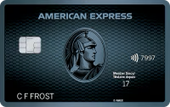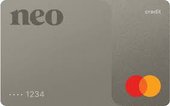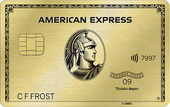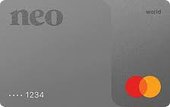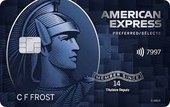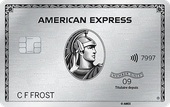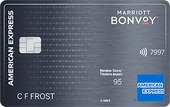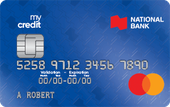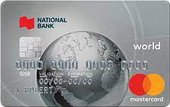Credit cards in Canada are far more than plastic rectangles that sit in your wallet. Each one can increase your buying power, earn cash back, let you pay off a big purchase over time, or help you get closer to your next vacation. It is all determined by your credit, your everyday spending habits, and your overall goals for your spending.
By definition, credit cards offer an open loan from a bank or lender, which you can use to pay for goods or services. But they can also offer a lot of opportunity for responsible senders, or potential problems for those with less discipline. Here's everything you need to know when you compare credit cards in Canada.
What are the main credit card types?
There are six main credit card types everyone should be aware of. It's important to compare credit cards based on their differences within each of these categories:
- Promotional interest credit cards: Also known as "0% purchase credit cards," promotional interest credit cards offer a promotional rate for a purchase, over a period of time - usually 24 to 36 months. If you don't pay off the balance before the promotional period is over, you may be charged interest on the whole purchase.
- Balance transfer credit cards: Balance transfer credit cards offer a promotional low interest rate to move a balance from one card to another. The balance transfer rate is only for a limited time - after which, the remaining balance left over will accrue interest at the card's regular rate.
- Rewards credit cards: Rewards credit cards offer points or cash back for your everyday spending, but often come with an annual fee. While you will get rewards every time you use it, these cards usually offer bonus categories, giving you even more returns at certain types of retailers.
- Airline and hotel credit cards: As their name suggests, these cards offer travel rewards in the form of airline frequent flyer miles, or hotel points. While these cards often come with an annual fee and higher interest rate, it's possible to earn back the fees by using your points for travel rewards aboard airlines or free hotel rooms. This type of card often have a sign up bonus.
- Low interest credit cards: For those who are looking to pay off a big purchase over time, low interest credit cards offer a reduced rate over time. These cards may come with an annual fee, but can be negated in the payment for your savings.
- No annual fee credit cards: No annual fee credit cards have $0 in yearly fees, but often do not come with a high credit limit, or any rewards. No annual fee credit cards are great for those who are building their credit, or rebuilding their file after a bankruptcy or period of bad credit.
- Credit builder credit cards: If you have damaged your credit score or if you haven't got a credit history at all, then you can use a credit card to build your credit rating over time. Also available for people with bad credit.
- Secured credit cards: A secured credit card works just like any other credit card except you will have to make a cash deposit before you can use the card. The amount deposited is typically the same as your maximum credit limit. Secured cards are an alternative to a credit building credit cards in that they can also help establish a positive credit history.
There are also credit cards aimed at different types of people.
- Immigrants: Unfortunately your credit report does not migrate with you, so recent immigrants to Canada have a more limited range of credit cards available to them.
- Pensioners: Income is an important part of the eligibility criteria for most banks. Since pensioners may have income from disparate sources other than employment, they may not be automatically eligible for some offers.
- Self-employed: These cards are tailored to smaller businesses and typically offer an attractive combination of interest-free days and rewards. However, as ever, be aware that the value of any rewards earned by funnelling capital expenses through a card are quickly negated by interest incurred if the balance rolls over.
- Students: Even though they may not have an established credit history or income, students can still get a credit card. These are typically entry level cards with a low credit limit that offer very little by way of rewards, but they are useful in that you can start building a credit history.
How do I compare credit card offers?
Based on your overall goals, it's easy to compare credit cards and get the perfect option for your needs. It all depends on what you want to achieve, and what types of credit card rewards you value the most.
The first step is to understand and evaluate your credit score. Higher credit scores are needed to qualify for the best credit cards in Canada. If you don't have a good credit history, you mat not necessarily get approved for the best options.
Next, determine what kind of rewards best for you. Benefits range from points that can be exchanged for travel or merchandise, to cash back that let you erase portions of your balance. Instead of applying for the biggest rewards credit cards, determine which ones will help you get closer to what you want most.
Finally, it's important to read all the fine print, and make credit card comparisons based on the interest rate and annual fee. If you won't use the rewards, or get the value from the annual fee through using rewards, it doesn't make sense to apply for that credit card.
Credit card repayment
Every month you spend on your credit card, your bank will require you to make a payment on your balance. You can choose to make the minimum payment (between 2% and 2.5% of your current balance, or a fixed amount per month), up to the entire balance. Although you have options, it's important to know that you are responsible for paying interest on any remaining balance.
Credit card interest charges
Interest charges are what the bank adds to your credit balances. Depending on the credit card you have, your interest rate can be as low as 8%, all the way up to 25% and beyond. This additional charge is added to your balance every month, until your credit card balance is paid off entirely.
The best way to use a credit card is to make purchases on it, and pay off the credit card balance in full every month. This strategy helps you maximize your credit card rewards, without paying additional fees to the bank — effectively giving you free points, miles, or cash back.
Credit card cash advances
Depending on which credit cards you have, you may be able to borrow cash against your balance. Credit card cash advances are limited by your card, and often come with a high interest rate.
While withdrawing cash from your card can be an easy way to get money to cover an emergency, a cash advance can be costly if not paid off immediately. Interest on cash advances are charged until the money is paid back, even if you don't have a balance on your card.
Credit card limit
Every credit card has a balance limit. Your limit is determine by your credit score, credit history, and the bank. Credit limits can range between $500 and $100,000, depending on the type of card and the bank.
Once you reach your credit card limit through spending and not paying it down, you will not be allowed to spend any more money until some of the balance is paid.
With years of responsible use, you can request your bank extend your credit limit. If you have a good credit report, you may be able to extend your credit card limit with a simple request.
Credit card annual fees
Depending on the credit card you apply for, it may come with an annual fee. Rewards credit cards, travel rewards cards and cash back cards often come with an annual fee: a sum charged yearly to your card for keeping the account open. Fees can range anywhere from $30 to $500 or more.
If your rewards credit cards come with an annual fee, it's important to make sure your rewards balance out every year. When your rewards credit card doesn't pay for the annual fee, you are paying the bank money to keep your card open.
